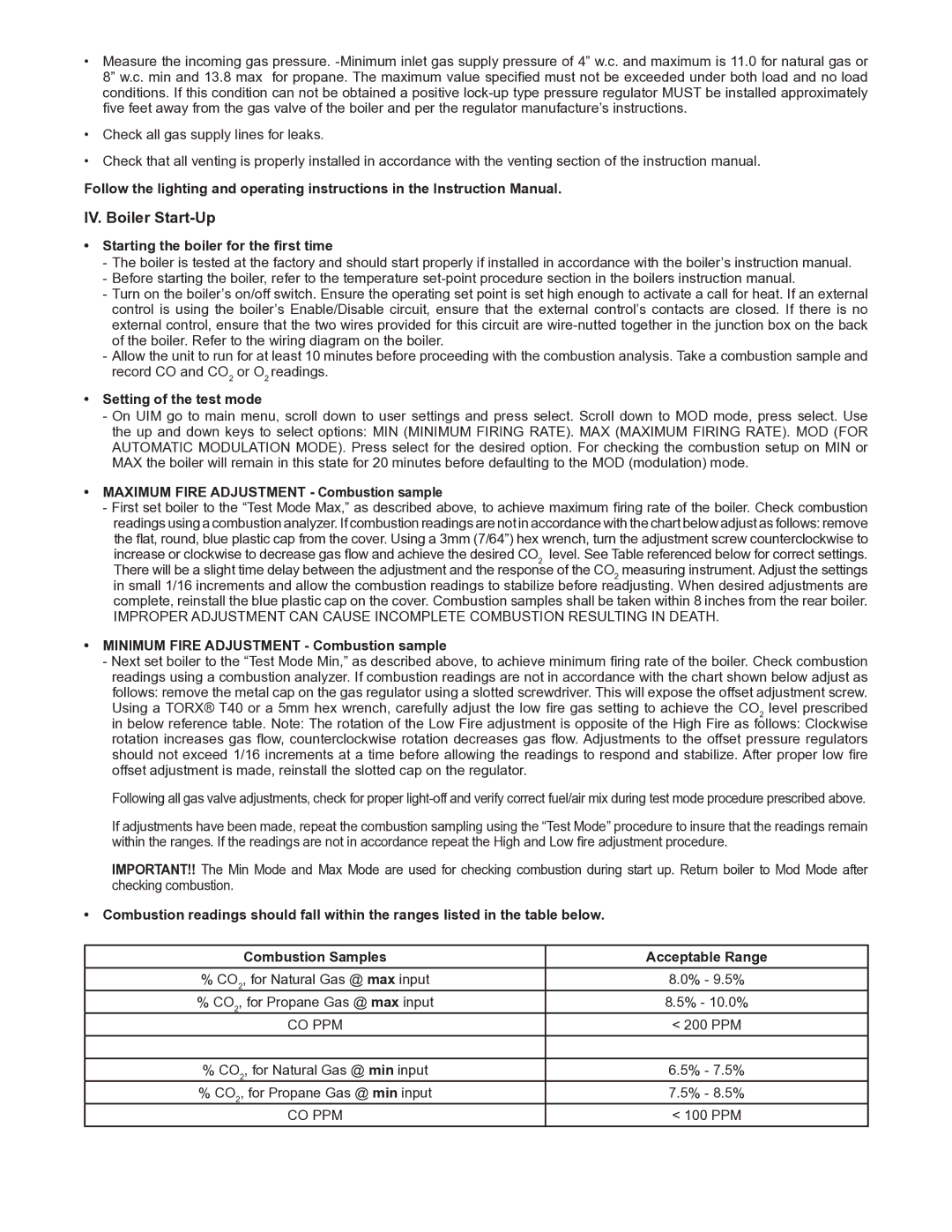VB/VW 500/750/1000 specifications
A.O. Smith is a well-known name in the water heating industry, and its VB/VW series models, particularly the 500, 750, and 1000, are designed for commercial applications, offering a range of advanced features and technologies. These models are recognized for their high efficiency, reliability, and performance, making them suitable for various industries, including hospitality, healthcare, and food service.One of the standout features of the VB/VW series is their impressive recovery rates. With a powerful heating capacity, these units can deliver hot water consistently, ensuring that large demands are met without interruptions. This is particularly important for businesses that rely on a steady supply of hot water throughout the day.
The VB/VW series utilizes advanced insulation technology, which significantly reduces energy loss. This feature not only improves the overall energy efficiency of the units but also contributes to lower operational costs. The use of foam insulation helps maintain water temperature, allowing for reduced energy consumption and enhanced performance.
These models come equipped with advanced control systems, providing users with greater flexibility and ease of operation. The user-friendly digital display allows for precise temperature control and monitoring, ensuring optimal performance is maintained at all times. Additionally, the temperature settings can be adjusted to suit specific water heating requirements, catering to the unique needs of various applications.
A.O. Smith's commitment to safety is evident in the design of the VB/VW series. These models incorporate multiple safety features, including a high-temperature limit switch, fusible links, and proper venting systems, ensuring safe operation in any environment. The robust construction of the units, combined with the use of high-quality materials, enhances durability and extends the lifespan of the water heaters.
Moreover, these models are designed for easy maintenance. The intuitive design allows for simplified access to key components, making routine checks and servicing straightforward for technicians. This ease of maintenance contributes to reduced downtime and enhances the overall operational efficiency of the water heating system.
In summary, the A.O. Smith VB/VW 500, 750, and 1000 water heaters are engineered to meet the demands of commercial applications with their high efficiency, advanced technology, and safety features. With their ability to deliver consistent hot water, coupled with ease of maintenance and reduced energy consumption, these models stand out as a reliable choice for businesses seeking efficient and effective water heating solutions.
